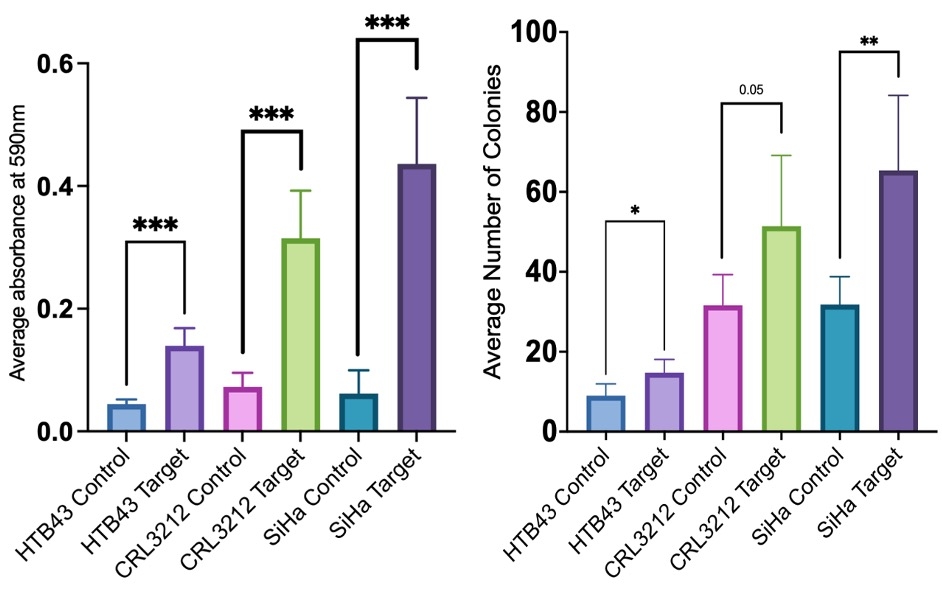Background
By epigenome-wide analyses, we and others have previously identified differentially methylated genes in the progression of HPV-associated cancers, including anal, cervical and head and neck squamous cell carcinomas (SCC). PAX6, a lineage-specific tumor suppressor, was identified as epigenetically downregulated across most HPV(+) cancers.. To determine its cellular function, we have evaluated the impact of PAX6 knockdown in overexpressing cervical and head and neck (HNSCC) cancer cell lines.
Methods
PAX6 expression was analyzed by reverse transcriptase-PCR and Western Blot in a HPV16(+) cervical cell line, SiHa, as well as theHPV(-) HNSCC cell line, HTB43, and its HPV E6/E7-transfected counterpart, CRL3212. The impact of small interfering RNA (siRNA)-mediated PAX6 knockdown on proliferation (MTT assay), anchorage-independent growth (soft agar), and gene expression (RNA-Seq) was examined.
Results
PAX6 was confirmed to be overexpressed in SiHa, CRL3212 and HTB43. siRNA knockdown was confirmed in all cell lines and resulted in both increased proliferation [SiHa (P< 0.001) CRL3212 (P< 0.001) HTB43 (P< 0.001)] and colony formation in soft agar [SiHa (P = 0.0056), CRL3212 (P = 0.05) and HTB43 (P = 0.04); Figure 1] compared to empty vector controls. Differential gene expression analyses of siRNA-treated cells confirmed significantly reduced expression of PAX6 in all cell lines (adjusted-P<0.001). A pooled analysis revealed 111 significant differentially expressed genes (adjusted-P<0.1), including upregulation of genes involved in squamous carcinogenesis (e.g.DNAH5, +1.58-fold change, P = 0.012 and RDX +1.11, P = 00052)), and downregulation of genes involved in tumor suppression (QKI, -1.42, P<0.00001 and SKI, -1.31, P = 0.001) .
Conclusions
We have demonstrated that attenuation of PAX6 in overexpressing HNSCC and cervical cell lines results in an enhancement of proliferation and anchorage-independent growth. Our results suggest that PAX6 may represent a common epigenetically-mediated tumor suppressor across HPV-associated cancers and provide clues as to its downstream mechanisms of action.

Figure 1. Proliferation (MTT) and anchorage-independent soft agar growth assay results.